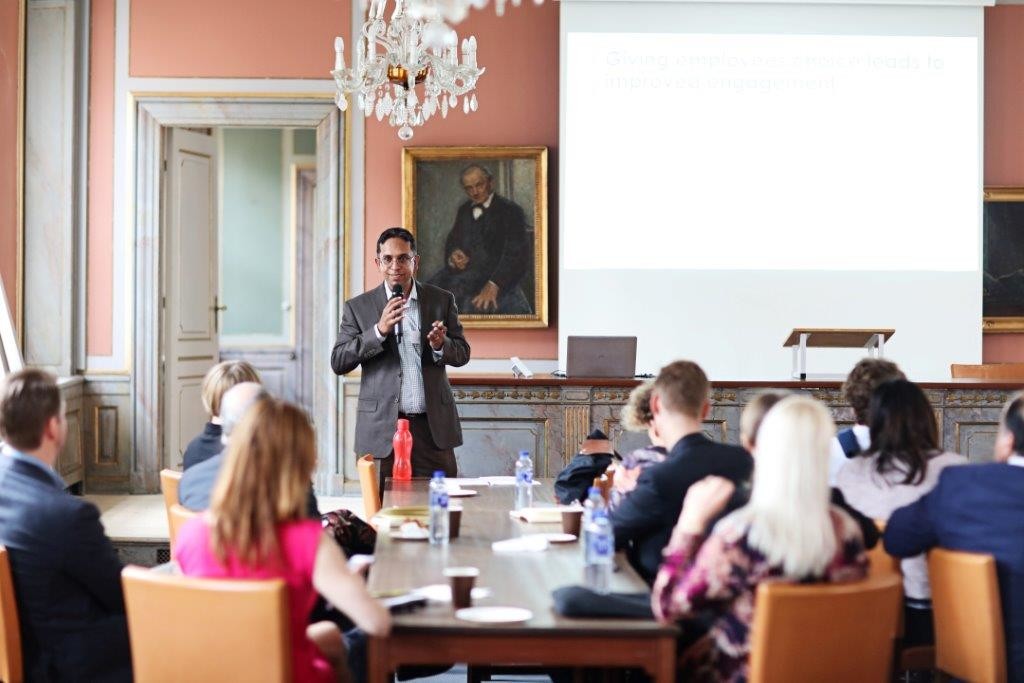Why employee involvement is an essential factor for organizational success
Organizations worldwide are struggling to cope with dwindling levels of employee engagement. Just 15% of working adults feel engaged at the workplace. Reasons for this trend include their inability to change with how the world is shaping, limited understanding of technology and social upheavals taking place, globalization of markets and the inability to gauge the expectations of younger employees, who continue to be a sizable part the workforce worldwide. Trust across platforms continues to slide and CEOs believe their top priority is to rebuild trust among stakeholders.
However, that is one part of the problem. Erosion of trust cuts both ways – with not just employees losing faith in organizations. The rise in internal fraud and white collar crime has resulted in organizations viewing employees with suspicion. 55% of cases of fraud occurred at companies with fewer than 100 employees and the average loss is about USD 1.3 million, according to an estimate. For example, in the United States, the biggest area of retail store fraud remains employee theft with a survey conducted citing it as the number one area of store loss.
Another factor is the deep state of conformity that exists in organizations – where employees are expected to toe the line and not be authentic at work. About 49% of employees surveyed in a study feel they need to conform in organizations. Also, just 10% of employee who participated in another research study felt that companies encouraged non-conformity. Does employee involvement lead to better results? Why care about it?
Employee involvement has been in practice for years and is meant to boost organizational performance. The goal is to tap the potential of human resources while giving employee opportunities to participate, contribute and align better with the objectives of the organization. Not just with decision making, employee involvement is related to identification with the organization. The benefits are numerous, ranging from direct impact such as greater control over work outcomes to job satisfaction to indirect influence on business performance and employee retention. The extent to which employees are involved varies in the decision making process – from information sharing to seeking feedback, from collaborative decision making to autonomy in roles they play.
However, since employee representation in high-involvement areas is less than adequate, any attempts to involve employees is seen as a farce. In the 2011 Workplace Employment Relations Survey conducted in the UK, inadequate involvement of employees in high value collaborative initiatives impacts engagement and creates doubts about the organization’s true intentions. Employees also feel less represented in critical actions at work. Even the best communication teams have a long way to go in involving employees in basics of communication pre-testing, an action we would consider as critical and pragmatic. In a recent study on Global Human Capital Trends, while a significant number of executives (80%) believe that employee experience is important for their business only a small number (22%) felt they were excelling at building a differentiated employee experience.
There are opportunities to take corrective measures that engage employees and reduce attrition. When employees feel they can be their best selves and know that the organization cares for them, it inspires trust. Informing and consulting employees about matters that concern them is a starting point. Other measures include profit-sharing, participation, quality circles and natural work teams that involve employees in decision making and make them belong. Employee involvement is known to have a positive impact on their well-being and improves how organizations operate. From directive instructions on participation to collaborative ways of working, from information transparency to employee control over organizational functioning are opportunities for building trust in the workplace.
So what can organizations do to involve employees and rebuild trust? What strategies must organizations adopt to bridge skepticism among employees and do more to encourage participation?
Autonomy or allowing employees choice over where, what, when and how to work organizations are able to engage them more than before. Employers who allow employees a wide range of choices performed 4 times better and had lesser turnover than those which didn’t give employees the freedom. To begin, the role of the communications team is to ensure that information is easy to access and flows freely. This helps employees view company practices as joined up and that they work for one organization and not fragments of firms helps immensely. Having leaders be transparent in their engagements also matters immensely to building trust and therefore involvement. There needs to be openness and willingness to bring employees into conversations early enough so that they can help the organization more than ever.
When information ranging from the state of the financial health of the business, hiring plans and performance measures are shared it allows for transparency and trust building opportunities. Likewise, when employees are invited to participate actively in shaping the organization’s future, it needs to go beyond just employee engagement surveys. They need to be allowed to be stakeholders in the financial growth and be part of problem solving groups.
Including employees in company initiatives early enough for them to add value, feeling listened to and engaging at work, will help them bring their full selves to work. The power of employee communication in creating a culture of involvement and demonstrating positive intent for organizational openness are essential to drive change and improve effectiveness. When organizations build trust, move decision making to the trenches and tell stories effectively, everyone is able to contribute to their fullest potential.
Does this resonate with you? What are your views? Please share them here. I am keen to know your thoughts.
This article first appeared on my Linkedin page.
I had the opportunity to speak at IABC’s 2018 EuroComm Conference on April 9 at Copenhagen, Denmark. The above post is a summary from my session.

